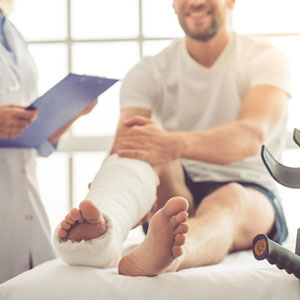 Determining Viability Of A Personal Injury Claim In Louisiana
Determining Viability Of A Personal Injury Claim In Louisiana
In order to have a valid personal injury claim, two essential elements must be present. First, the defendant must have acted unreasonably or negligently. In other words, establishing that the person being sued has done something wrong is absolutely necessary. A clear example of this would be demonstrating how someone running a stop sign caused an accident by virtue of their negligence.
The second element you must prove is that the accident caused damage, whether to your property or person. For example, if I were to run a stop sign but did not collide with you or cause any harm or damage, then there is no basis for a case. Conversely, if my negligence damages your car, the extent of that damage becomes a weighty consideration.
In some cases, there may be accidents where the vehicle sustains damage, but fortunately, no one in the car is injured. Conversely, there are instances where the property damage to the vehicle is minimal, yet severe injuries are sustained by individuals inside. Both of these scenarios could be caused by a person who acted negligently, and these critical aspects need to be proven before a judge or jury.
It is important to be aware of these elements from the beginning and gather relevant information, not necessarily with the intention of going to trial, but to be prepared should the case proceed to trial.
Deadline To File A Personal Injury Claim
Generally, the time limit for taking legal action in a personal injury case is one year, although there are exceptions and minor variations to this. Unfortunately, many individuals involved in accidents mistakenly believe they have several months to initiate legal proceedings, but this timeline should not be seen as an invitation to procrastinate in taking action.
While it may not be absolutely necessary to contact a lawyer immediately after an accident, I strongly advise all my clients, friends, and family members to do so as soon as reasonably possible. This allows you the opportunity to have a professional assist you in determining the necessary steps to take, including seeking medical treatment where required and guiding you through the appropriate course of action.
Beginning The Process After A Car Accident
My initial contact with clients is typically conducted over the phone, followed by a brief in-person meeting to establish a deeper relationship, address any concerns or inquiries, and ensure they are comfortable with everything. Once this happens, I promptly inform the party at fault for the accident who harmed my client that I will be representing them.
This notification serves to inform the opposing party that all further communication should be directed to me, preventing my client from being bombarded with unwanted contact. By assuming this role as their representative, I aim to provide them with peace of mind, allowing them to focus on what matters most: restoring their health and well-being to be as close to what it was before the accident.
My Role As An Attorney In The First Phases Of A Case
In the next phase of my work, I gather evidence that demonstrates the responsible party’s fault and clearly shows the damages that have been incurred. To establish fault, I analyze the accident dynamics, eyewitness testimonies, admissions by the opposing party, and the positioning of the vehicles. These elements contribute to piecing together a clear picture of the accident and proving that the party in question was, indeed, at fault for the collision.
Of course, the type of evidence I rely on varies on a case-by-case basis, but statements, photographs, and written documentation all typically play an integral role in building a solid case. What’s more, I work to secure witnesses and gather their contact information. This allows me to contact them later for their testimony, which can significantly support a case as insurance companies often attempt to deny or re-allocate fault.
I advise my clients not to rush into providing a detailed account of the accident immediately after it occurs, as the adrenaline and emotional impact can distort their recollection. Instead, I recommend taking some time to calm down before writing down everything they remember about the incident. Still, this step is essential because memories can fade over time, and having a written record helps preserve crucial details.
Photographs, journals, names of individuals involved, and any sketches or drawings related to the accident serve as valuable evidence to support the case – and by combining these various forms of evidence, I can construct a compelling argument that allows me to effectively pursue my client’s interests.
Finally, I’ll communicate with my client’s healthcare providers to address any inquiries they may have. While I am not directly involved in the medical treatment process, I ensure a level of coordination to support my client’s overall well-being that they may not get otherwise.
For more information on The Basics Of A Personal Injury Claim In Louisiana, an initial consultation is your next best step. Get the information and legal answers you are seeking by calling (337) 240-6697 today.

Call Us Now For A Personalized Case Evaluation
(337) 240-6697

